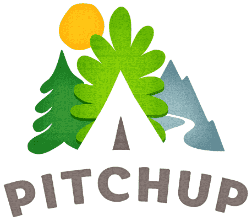The Untraceables - your guide to non-impact camping
 Wild camping
is, as we all know, a tad different than pitching up at a big campsite or holiday park. There’s swimming in the crick/creek rather than at a pool on-site for a start, and you also have to be a bit more prepared with your supplies if you’re planning to wild camp somewhere really in the
boonies
. (Cue theme tune from Deliverance.) But probably the main thing to consider when choosing to wild camp over staying on a campsite or caravan park is the impact you have on the environment around you. Which should be none, according to the ethos of non-impact or no-trace camping.
Wild camping
is, as we all know, a tad different than pitching up at a big campsite or holiday park. There’s swimming in the crick/creek rather than at a pool on-site for a start, and you also have to be a bit more prepared with your supplies if you’re planning to wild camp somewhere really in the
boonies
. (Cue theme tune from Deliverance.) But probably the main thing to consider when choosing to wild camp over staying on a campsite or caravan park is the impact you have on the environment around you. Which should be none, according to the ethos of non-impact or no-trace camping.
There’s the simple stuff like taking home your litter and not burning down a forest with a flicked and still-lit cigarette end, and there are the stated principles of movements like Leave No Trace camping, which offer tips like making sure you prepare for your trip and any emergencies, so you don’t end up camping somewhere last minute where you might damage the environment. The general rule is to leave the campsite the way it was when you found it, using the maxim ‘Take nothing but pictures, leave nothing but footprints.’
Here’s how to camp non-impact:
No pushing : Pick your spot carefully when you’re pitching up. Don’t camp somewhere where’ll you have to push aside shrubs or trample down grass. If it looks like someone else has camped in the spot before, move on and find somewhere else.
Stump up for a stove : Use a portable stove rather than a campfire. Campfires are generally discouraged in non-impact camping both because they scorch the grass or vegetation, and because any driftwood or dead wood you might use as firewood could be used as a home by insects and small animals. Use a camping stove for your meals and only light a fire if you really have to and if you can do so without leaving any trace of it being there (such as using an existing fire ring in an often-used campsite).
Mind your feet : Be careful where you’re walking – don’t leave a trail or damage any vegetation around you. If you’re in a group, don’t walk in single file as this way you’ll create a lasting trail; spread out instead. Walk on sturdy and resistant ground if possible, so hard sand rather than dry and loose, or dead grass rather than living.
Wrap it up : Take everything you use home with you in plastic or paper bags. Most people know to do this when wild camping, but don’t realise that it also applies even to biodegradable food such as orange peel or teabags. If you bury these and an animal digs them up, it could risk disturbing the environment and spreading pips and seeds.
Loo breaks : When going to the loo during a wild camping trip, you should get as far away from any water source as possible. No, you don’t have to trek miles into the forest, but you should be at least 200 feet away from any rivers or streams. Bring a trowel with you and dig a hole about six inches deep; cover the hole with soil when finished and bag any used toilet paper to dispose of later.
Suds and bubbles : Use very little detergent or washing up liquid when doing dishes, and never wash dishes directly at a stream or water source where the soap can get into the water. Use a container or washing up bowl and when finished, pour the water out a little at a time in different spots instead of dumping the whole bowl out onto the ground. Some non-impact campers prefer to use disposable plates when wild camping as they can be bagged and brought home for recycling.
Respect the animals : Be careful about getting close to or disturbing wild animals or their dens, and don’t give animals food or leave it lying about. Don’t pick flowers or plants, or take things home such as shells as they could be homes for insects or small animals.
Respect the humans : No-trace camping is also about not having an impact on other campers nearby, so pitch up as far away from others as you can and try not to disturb them with noise. It’s because you’re being nice of course, but it’s also useful for avoiding any neighbourly camping disputes. Which is always helpful:
